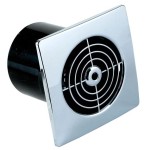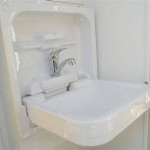How to Effectively Seal The Bathroom Sink Drain
The bathroom sink drain often presents a subtle yet persistent challenge in maintaining a well-functioning and sanitary home environment. Leaks, unpleasant odors, and the ingress of unwanted pests can all stem from a compromised sealant or a poorly installed drain assembly. Therefore, understanding the proper methods to seal the bathroom sink drain is crucial for homeowners and plumbing professionals alike. This article will delve into the various aspects of effectively sealing a bathroom sink drain, covering necessary materials, troubleshooting common issues, and providing detailed instructions for ensuring a watertight and airtight seal.
A properly sealed bathroom sink drain prevents water damage, reduces the risk of mold and mildew growth, and mitigates plumbing issues that can lead to costly repairs. Neglecting this seemingly minor aspect of bathroom maintenance can result in significant long-term consequences. Moreover, a well-sealed drain contributes to a cleaner, healthier, and more aesthetically pleasing bathroom.
Understanding the Components of a Bathroom Sink Drain
Before attempting to seal the bathroom sink drain, it is imperative to identify and understand the function of each component. The primary parts include the sink flange, the drain body, the rubber or plastic gaskets, the tightening nut, and the tailpiece. The sink flange rests inside the sink basin and is the visible portion of the drain assembly. It typically includes a strainer to prevent large debris from entering the drainpipe. The drain body is located beneath the sink and is connected to the flange. Gaskets are essential for creating a watertight seal between the flange and the sink basin, as well as between the drain body and the tailpiece.
The tightening nut secures the drain body to the flange, compressing the gaskets to create the necessary seal. The tailpiece is a pipe connected to the drain body that leads to the P-trap, which is designed to trap debris and prevent sewer gases from entering the bathroom. Understanding how these components interact is essential for identifying the source of leaks and applying the appropriate sealing techniques.
The material of the drain components also plays a crucial role in the sealing process. Brass, stainless steel, and PVC are commonly used materials, each with its own advantages and disadvantages in terms of durability, corrosion resistance, and ease of installation. Compatibility between the drain components and the chosen sealant is another factor to consider.
Essential Materials and Tools for Sealing a Bathroom Sink Drain
Successfully sealing a bathroom sink drain requires the proper tools and materials. Key items include a new drain assembly (if replacing an old or damaged one), plumber's putty or silicone caulk, adjustable pliers or a basin wrench, a putty knife or scraper, a screwdriver, and clean rags. Plumber's putty is a pliable, clay-like substance that is commonly used to create a watertight seal between the sink flange and the sink basin. Silicone caulk is another option, offering greater flexibility and durability, particularly in environments with fluctuating temperatures and humidity levels.
Adjustable pliers or a basin wrench are necessary for tightening the drain nut and other connections. A putty knife or scraper is useful for removing old putty or caulk residue. A screwdriver is needed for tightening screws that may secure the drain flange. Clean rags are essential for wiping away excess sealant and cleaning the work area. The choice between plumber's putty and silicone caulk depends on personal preference and the specific requirements of the installation. Plumber's putty is generally easier to work with and less expensive, while silicone caulk provides a more durable and long-lasting seal.
Safety considerations are also important when working with plumbing materials. Wearing gloves protects the hands from irritants and sharp edges. Eye protection is recommended to prevent debris or sealant from entering the eyes. Ensuring adequate ventilation in the work area is crucial, especially when using silicone caulk, which can emit fumes.
Step-by-Step Guide to Sealing a Bathroom Sink Drain
The process of sealing a bathroom sink drain involves several key steps, beginning with the removal of the old drain assembly. First, turn off the water supply to the sink. Disconnect the P-trap from the tailpiece. Use adjustable pliers or a basin wrench to loosen the drain nut that secures the drain body to the sink flange. Once the nut is loose, carefully remove the old drain assembly from the sink. Clean the sink basin and the surrounding area thoroughly, removing any old putty or caulk residue with a putty knife or scraper.
Next, prepare the new drain assembly. If using plumber's putty, roll a rope of putty and apply it evenly around the underside of the sink flange. Ensure that the putty completely covers the flange's edge. If using silicone caulk, apply a bead of caulk around the underside of the sink flange. Insert the sink flange into the drain opening in the sink basin. From underneath the sink, attach the drain body to the sink flange, ensuring that the gaskets are properly positioned. Tighten the drain nut securely, but avoid overtightening, which can damage the drain components or compromise the seal.
After tightening the drain nut, remove any excess putty or caulk with a putty knife or clean rag. Reconnect the tailpiece to the drain body and the P-trap. Turn on the water supply and check for leaks around the sink flange and the drain connections. If leaks are present, tighten the drain nut further or reapply the sealant. It may be necessary to disassemble the drain assembly and inspect the gaskets for damage or misalignment. Once the drain is properly sealed, allow the sealant to cure according to the manufacturer's instructions before using the sink.
Troubleshooting Common Sealing Issues
Despite careful installation, sealing issues can still arise in bathroom sink drains. One common problem is leaks around the sink flange. This can be caused by insufficient sealant, improper gasket placement, or overtightening of the drain nut. To address this issue, disassemble the drain assembly and inspect the sealant and gaskets. Reapply sealant and ensure that the gaskets are properly positioned before reassembling the drain.
Another common issue is leaks around the drain connections. This can be caused by loose connections or damaged threads. Tighten the connections securely and inspect the threads for damage. If the threads are damaged, replace the affected components. In some cases, the use of Teflon tape can help to improve the seal around threaded connections.
Odors emanating from the drain can also indicate a sealing problem. This can be caused by sewer gases escaping through a faulty seal. Ensure that the P-trap is properly installed and filled with water. Inspect the drain connections for leaks that could allow sewer gases to escape. If the odor persists, consider cleaning the drain with a drain cleaner to remove any accumulated debris that may be contributing to the odor.
Mineral buildup can also compromise the seal over time. Hard water can leave deposits that erode the sealant or prevent a tight fit between components. Regularly cleaning the drain with a descaling solution can help to prevent mineral buildup. Consider installing a water softener to reduce the mineral content of the water supply.
Maintaining and Inspecting the Seal
Regular maintenance and inspection are crucial for ensuring the long-term effectiveness of the bathroom sink drain seal. Periodically check for leaks around the sink flange and drain connections. If leaks are detected, address them promptly to prevent water damage. Clean the drain regularly to remove debris and prevent clogs. Avoid using harsh chemicals that can damage the sealant or drain components.
Inspect the gaskets and sealant for signs of wear and tear. If the sealant is cracked or peeling, or if the gaskets are damaged, replace them as needed. Over time, the sealant can dry out and become brittle, losing its ability to create a watertight seal. Similarly, gaskets can deteriorate due to exposure to water and chemicals.
Properly maintaining the bathroom sink drain seal not only prevents leaks and odors but also extends the lifespan of the drain assembly. By following these guidelines, homeowners can ensure that their bathroom sink drain remains properly sealed and functional for years to come. Regular cleaning, inspection, and timely repairs are essential for maintaining a healthy and hygienic bathroom environment.
Choosing the right sealant is also an important factor in long-term maintenance. Silicone caulk, while potentially more challenging to apply initially, often offers superior longevity and resistance to degradation compared to traditional plumber's putty. However, the application area must be completely dry for silicone to adhere effectively. Thoroughly cleaning and drying the area before applying any sealant ensures optimal adhesion and a longer-lasting seal.

Installing A New Bathroom Sink

How To Replace A Bathroom Sink Drain

2pcs Bathroom Sink Drain Plug Stopper Rubber Seal Ring O Rings Gask

New Bathroom Sink Drain Leaks At Threads

Bwe Vessel Bathroom Sink Pop Up Drain Without Overflow In Matte Black A 9p 02 B The Home Depot

Vigo Vessel Bathroom Sink Pop Up Drain And Mounting Ring In Matte Gold Vg07000mg The Home Depot

Bath Tub Drain Stoppers Sink Bathtub Plug Rubber Kitchen Bathroom Laundry Bar Water Stopper Seal With Hanging Ring Com

2 Pack Bathroom Sink Seal Pop Up Drain Vessel Basin Stopper With Overflow

Push And Seal Pop Up Drain Stopper With Overflow Assembly For Bathroom Lavatory Vanity Vessel Sink It Fits Diameter Of 1 To Temu United Kingdom
Bathroom Sink Plumbing Installation Diy Montreal







